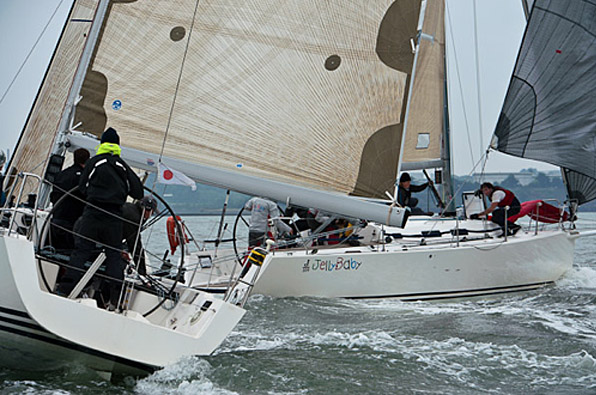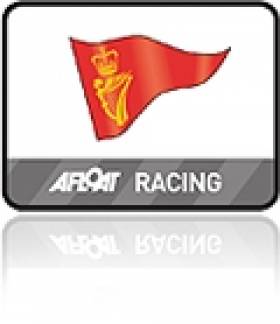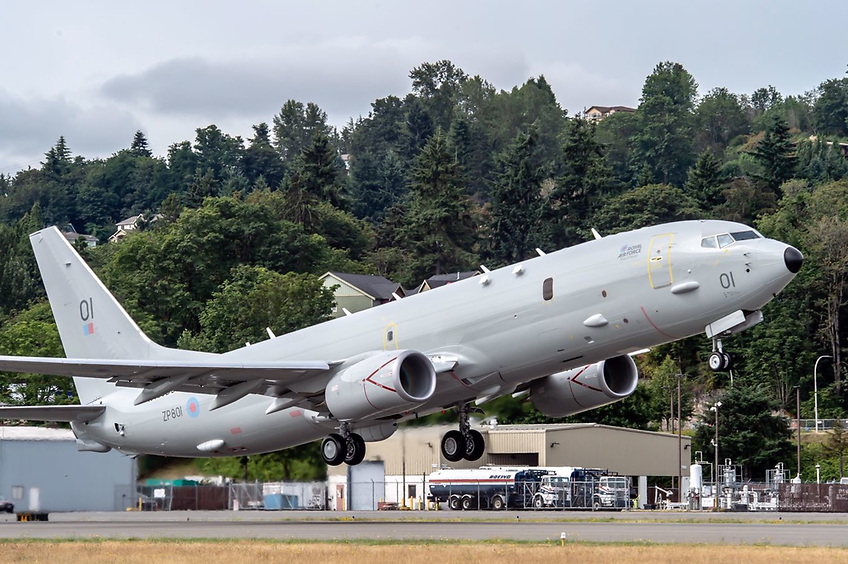Displaying items by tag: John Crotty
Crotty Stays on Top in 1720s
The sun may have been missing from the scene this morning at Crosshaven and the skies may have been dark and overcast but the wind was blowing, the buzz was very definitly in the the air and the spring was in every sailors'step as they arrived in their droves to set forth on the second day of the O'Flynn Exhams Autumn League at the Royal Cork Yacht Club writes Claire Bateman. Photos from race two on the gallery click HERE
The wind was gusting some 26 knots on the marina but by the time the boats had reached the comittee boats for the start of racing the east wind had moderated to some 10/12 knots and later went north easterly, was obviously going to provide a good day of sailing. The two Race Officers had put their minds together on the courses and decided to sail both fleets within the harbour and this proved to be an outstanding success. Race Officer David O'Brien was today on Classes Three, Four and Whitesail one and two and his boat "Sabrone" was kindly provided by Admiral Paddy McGlade who was on board for the racing. Richard Leonard's committee boat "Capta Ventum" was kindly provided by Pat Healy who was also on board to watch the day's events unfold.

Tight handling in the second day of Cork's Autumn League races. Photo: Bob Bateman. More on the gallery HERE
There are exceptionally high spring tides at the moment and this exercised the minds of the all sailors to keep out of the strong tide and on the other hand to avoid going aground on any of the banks around the harbour. In this regard the one casualty was Peter Webster's Thistle from Class Four which went aground and spent some time waiting for the incoming tide.
The tight courses and the racing tide coupled with the sufficient breeze made for close racing. John Crotty was a very happy man sailing the 1720 Two 2 Tango and winning the class for the second week in a row. Class One is of course a very competitive class and there was close racing between the 4 X332s. In Class Two it was good to see Bad Company and wicked so close together but the day in Class Two belonged to Shane Statham of Waterford Harbour in Slack Alice who ended first overall in IRC and ECHO. In Whitesail 2 Clive Doherty had an excellent day winning IRC1 and Ernie Dillon received a tumultous reception when his name was called out in the same class for wining ECHO.
The combination of the fleets racing in the magnificent harbour today added greatly to the buzz with yachts flying everywhere and the fleets moving around with the greatest of ease. Some were up off Cobh while others went to a laid mark off the Aghada shore and Whitesaill one and two were given a course which should have taken in the OFE2 buoy outside the harbour but given the fear would lighten even further race officer David O'Brien decided to shorten the course so the white sail fleets hada somewhat easy day of sailing and returned early to the warmth of the club house. It was certainly a huge success on the part of the race officers and added greatly to the enjoyment as was heard from the sailors in their apés sail get totether. There were three protests from the racing today but one was withdrawn and the other two were resolved amicably so all was well and the prize giving presided over by Aeibhín Cahalan of O'Flynn Exhams brought a fitting finish to the day.





























































